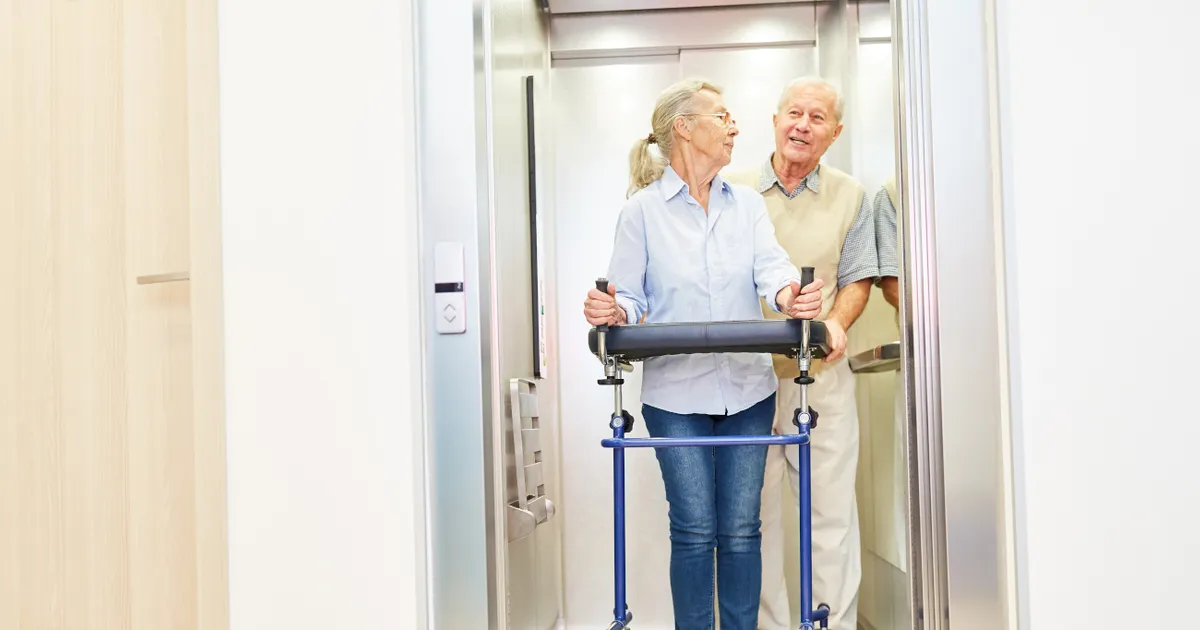Home elevators are more common now than they ever have been. That’s thanks in large part to an aging population. It’s estimated that the prevalence of home elevators installations are rising by as much as 10 percent year over year.
Opting to invest in a home elevator is widely considered a wise move if it fits into your budget. Though there sure are several practical benefits, there are as many ways for the process to go wrong. But thankfully, avoiding costly mistakes is as simple as reading and researching as much as possible.
Today, we’re going to break down the installation process, highlight a few crucial considerations, and explore the costs associated with installing an elevator in your home.
 Robert Kneschke/Shutterstock
Robert Kneschke/ShutterstockBenefits of Installing a Home Elevator
There’s a reason more and more homeowners are installing home elevators. They can be essential in the event that mobility complications prevent one or more of the occupants from being able to go up and down a flight of stairs. They’re often a fundamental part of large-scale age-in-place renovation projects done to maintain the independence of the homeowner.
The benefits of installing a home elevator extend further than mobility accommodation. They also serve a practical function in homes that have them, making moving furniture and other heavy objects much easier. Investing in a residential elevator can also increase the property value of your home.
Things to Consider Before Installing a Home Elevator
There’s a lot to consider before installing a home elevator. It’s a large project that has the power to completely reshape your home as well as your finances.
You should be ready to answer the following questions before contacting a qualified installer:
- Does your home have enough space for an elevator?
- How much are you willing to spend?
- Are you prepared to endure up to two months of constant construction?
How to Get a Home Elevator Installed in Your Home
Connecting with a professional installer or reaching out to a manufacturer of residential elevators is the first step. What follows can depend a lot on:
- The layout of your home;
- Your needs, and;
- The type of elevator you’re looking to install.
The types of home elevators are:
- Cable driven;
- Hydraulic;
- Geared traction;
- Chain driven;
- Shaftless, and;
- Pneumatic or vacuum.
Most residential elevators are put in as the house is being built, though retrofitting an older home with an elevator is common too. Older homes may need the help of an architect to help redesign the layout to create the necessary space.
Inspections and Regulations
An elevator is a complex machine that relies on a range of moving parts in order to work effectively and efficiently. Homeowners also must adhere to a rigid list of state-level regulations in order to lawfully operate them.
Every elevator must be inspected immediately following installation and before it can be used. After the initial inspection, most states require periodic inspections once or twice a year. The amount of maintenance required can depend on the manufacturer’s recommendations and how often it’s used.
Cost of Installation
As with all things, the cost of a home elevator is heavily dependent on size and features.
While a simple, one-person elevator with a 350-pound capacity starts at $15,000, it can go as high as $20,000 depending on the brand, type, and number of floors. Larger, 1,400-pound capacity elevators can cost as much as $65,000, though those aren’t as common as the smaller, more cost effective options.
It is important to note that all of these prices include installation, However, they don’t include any additional renovations that may need to be made to your home ahead of time.
Buyer Beware
Getting an elevator installed in your home can come at a substantial cost — and that’s if everything goes perfectly. Hiring the wrong installer or choosing an inferior elevator manufacturer can inflate your renovation budget even further.
What’s worse, the elevator inspection departments in states across the country are much smaller than they should be. As a result, the residential elevator sector is seriously lacking in the oversight department.
It’s on the homeowner to do the proper research, make the right contacts, and ensure the safety of the elevator’s installation and operation. All the more reason to take as much time as you need to learn as much as you can before finalizing an installation contract.
Conclusion
Never put off maintenance issues or exceed the elevator’s weight restrictions. Everyone using the elevator should familiarize themselves with the elevator’s on-board emergency features and know what to do if they ever get stuck. Investing in a space guard to fill the gap between the elevator and the outer door is essential too, particularly in a home with young children.
When done safely, a home elevator can be a hugely beneficial upgrade to your home. It works wonders for seniors’ independence, is much easier on everyone’s knees, and can even increase the value of your home. It can be done affordably too. Providing you educate yourself enough to avoid the most common mistakes.